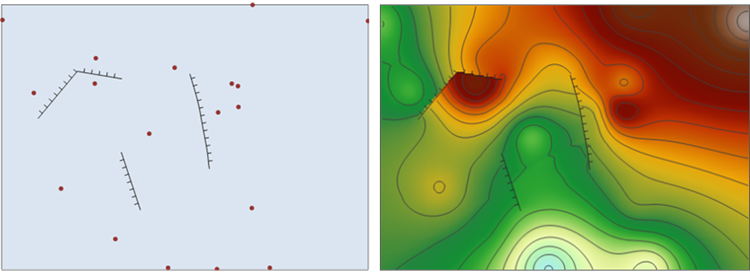Barrier Splines Interpolation
Feature Description
The barrier splines interpolation method generates raster surfaces using obstacles to interpolate points. Currently only line objects are supported as barriers. Commonly used for creating contour raster surfaces with elevation points and fault data.
- The point dataset for interpolation must contain a numeric field as the interpolation field.
- Barrier splines interpolation is similar to spline interpolation, but differs in that it accounts for discontinuities between input barriers and the point dataset being interpolated.
Feature Entry
- Spatial Analysis Tab->Raster Analysis group->Interpolation Analysis->Barrier Splines.
- Toolbox->Raster Analysis->Interpolation Analysis->Barrier Splines.
Parameter Description
- Set common parameters for interpolation analysis including source datasource, bounds, result data and environment settings. For common parameter settings, see: Common Parameter Description.
- Obstacle Dataset: Constraint data for interpolation, supports line dataset only.
- Expected Point Count: The desired number of points to participate in the interpolation calculation.
- Smoothness: Input smoothness value with range [0,1], default is 0.1. Smoothness indicates how closely the interpolation curve fits the points - higher values allow greater deviation.
- Tension:: Input tension value, default is 40. Tension adjusts surface characteristics of output raster data - higher tension reduces individual point influence on calculation results.




